10 Best Dragon Books and Series
From the obscure to the well-known, we break down the 10 best dragon books and series of all time.
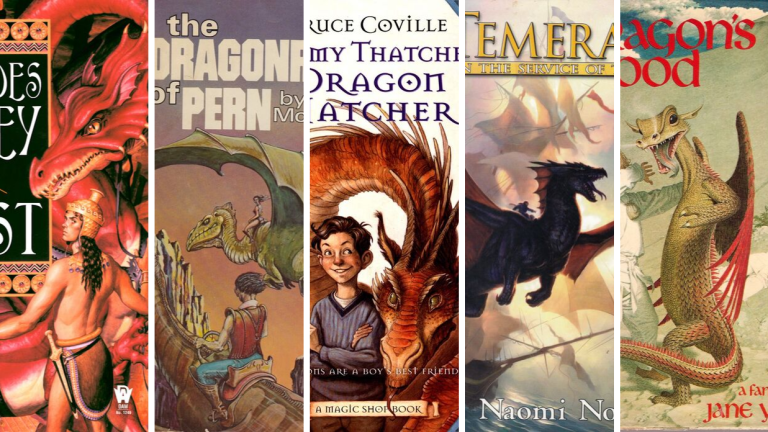
Dragons in fantasy can be many things. Predatory shapes in the sky. Warships. Animal companions. People: rulers, refugees, friends. With so many books and so many types of dragons to choose from, it can nevertheless be difficult to find a book about unique dragons. For this list I’ve pointedly ignored Game of Thrones, because Daenerys’ brood are the default mold of today’s fantasy dragons. Rare, powerful fire-breathing animals, they’re intelligent but not quite people. You probably know already whether you like them or not.
This is a list about dragon books that do something different. Whether that’s a change in physiology or behavior, or a particularly detailed look at day-to-day life with giant reptiles, you’ll find a variety here.
(Another notable exception: I haven’t included many shapeshifters who are basically human but have a dragon form. This is a whole subgenre, and one I’m not knowledgeable enough about to include.)
This list stretches from middle grade readers to adult-marketed books, with a lot in between. Books like the Pern series in the 80s and 90s were marketed to adults but widely read by teens. So expect most but not all of the crossovers here to be enjoyable for both adults and teens.
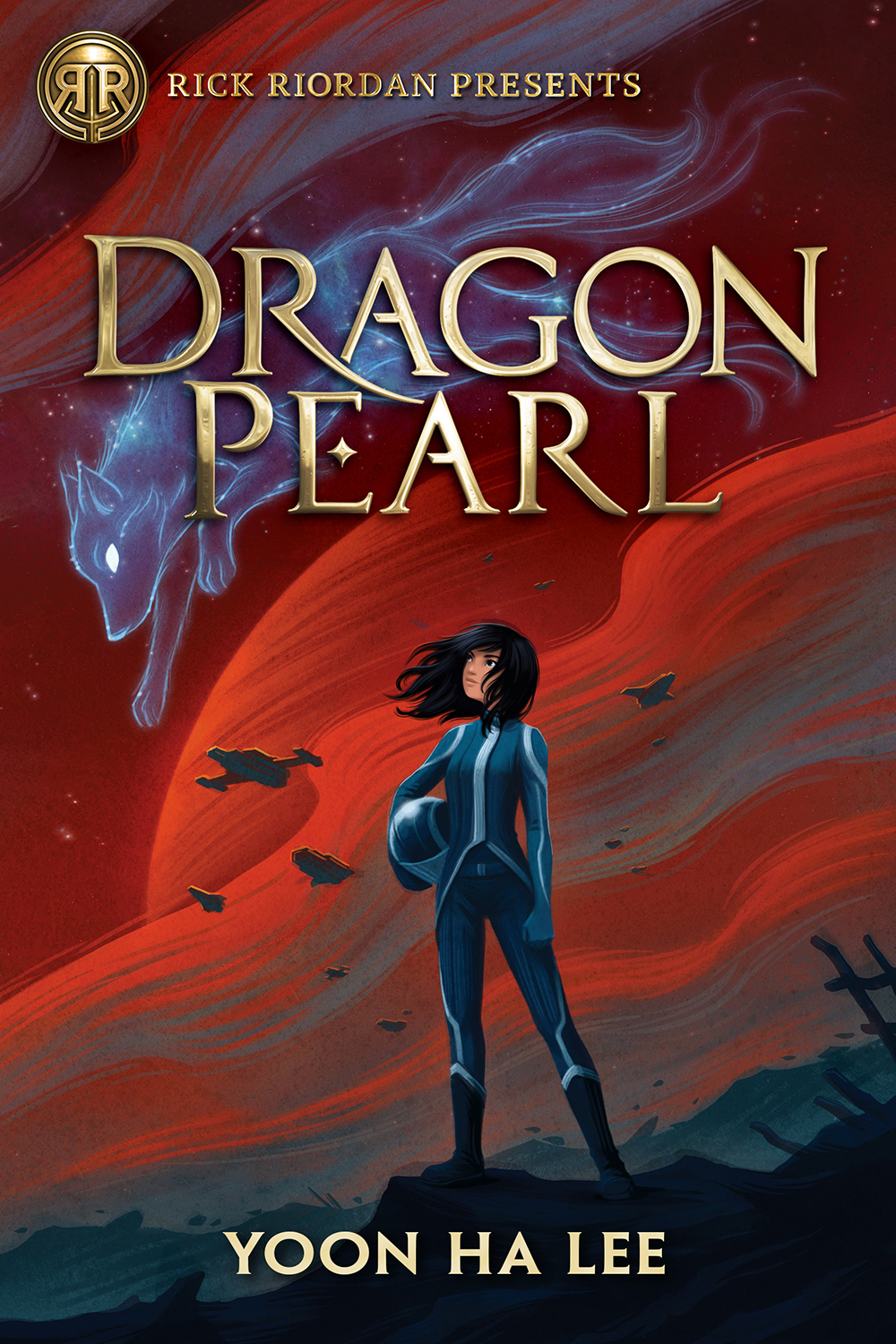
Dragon Pearl (2019)
By Yoon Ha Lee
Dragon Pearl’s dragons are shapeshifters, as are many of the characters in this charming middle grade book. Inspired by Korean mythology, the solar systems of Dragon Pearl are inhabited by both humans and magical creatures. The main character, Min, is a fox spirit, and one of her friends, Hanuel, is a dragon. While the book doesn’t go into detail on how dragons live at home, there are hints at interesting world-building in the form of a powerful dragon council.
read more: Best Space Operas of 2019
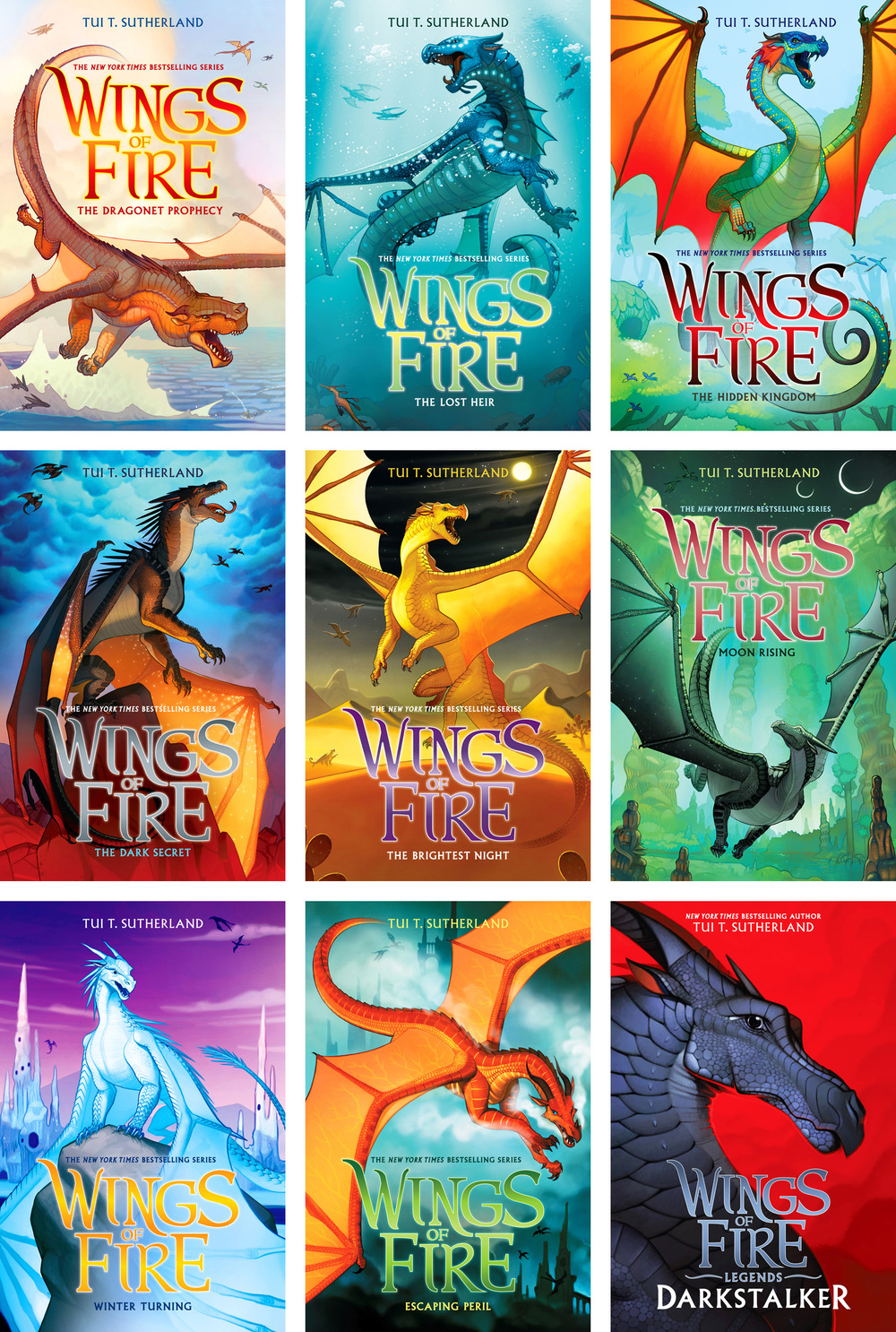
Wings of Fire (2012)
By Tui Sutherland
Humans exist in the world of Wings of Fire, but the story isn’t about them. Instead, it’s entirely concerned with intelligent dragons, who have their own societies and consequently their own wars. Although this is a middle grade series, it’s surprisingly violent and tense. Because it’s a middle grade series, the plot flashes along at an impressive speed that nevertheless doesn’t feel rushed.
These are beach reads for me, with their clearly-drawn characters and adventurous stories. These dragons differentiate themselves from others by existing in several different subspecies or kingdoms, such as ice-breathing dragons or magical dragons patterned in blue-purple and silver like a night sky.
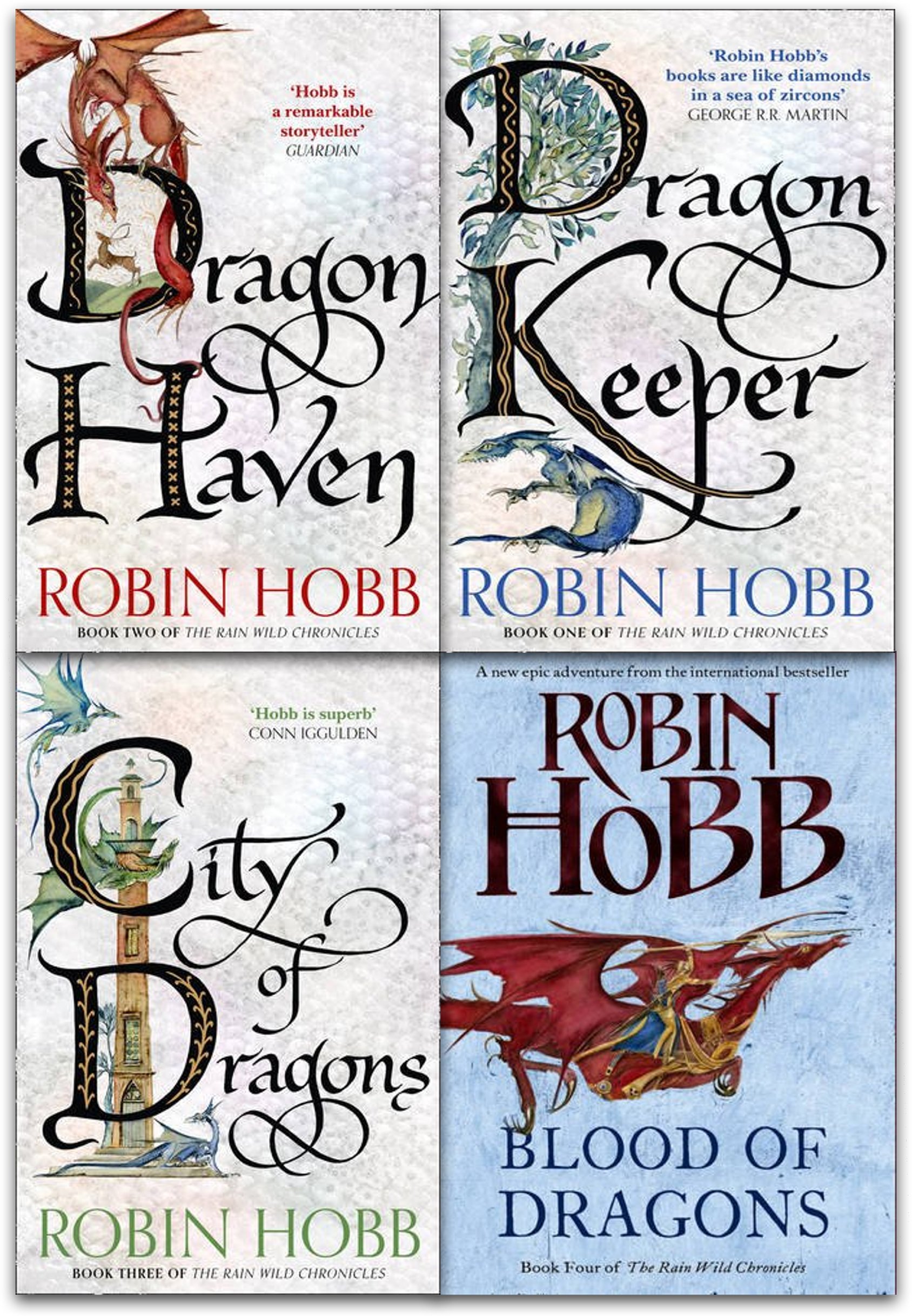
The Rain Wild Chronicles (2009)
By Robin Hobb
While the Rain Wild trilogy is part of another sprawling series, these three volumes focus primarily on dragons and the people who travel with them. Robin Hobb’s dragons have several unique traits: they are born as sea serpents and spin cocoons before emerging as what most people think of as dragons. They can create a psychic bond with humans, but dragons use it to coerce people as much as to befriend them. The dragons in this series are unique individuals, sometimes standoffish and particular. They can also sculpt humans into new shapes: it’s a major revelation in the book to discover just how much humans change when a dragon decides to metaphorically take them under their wing.
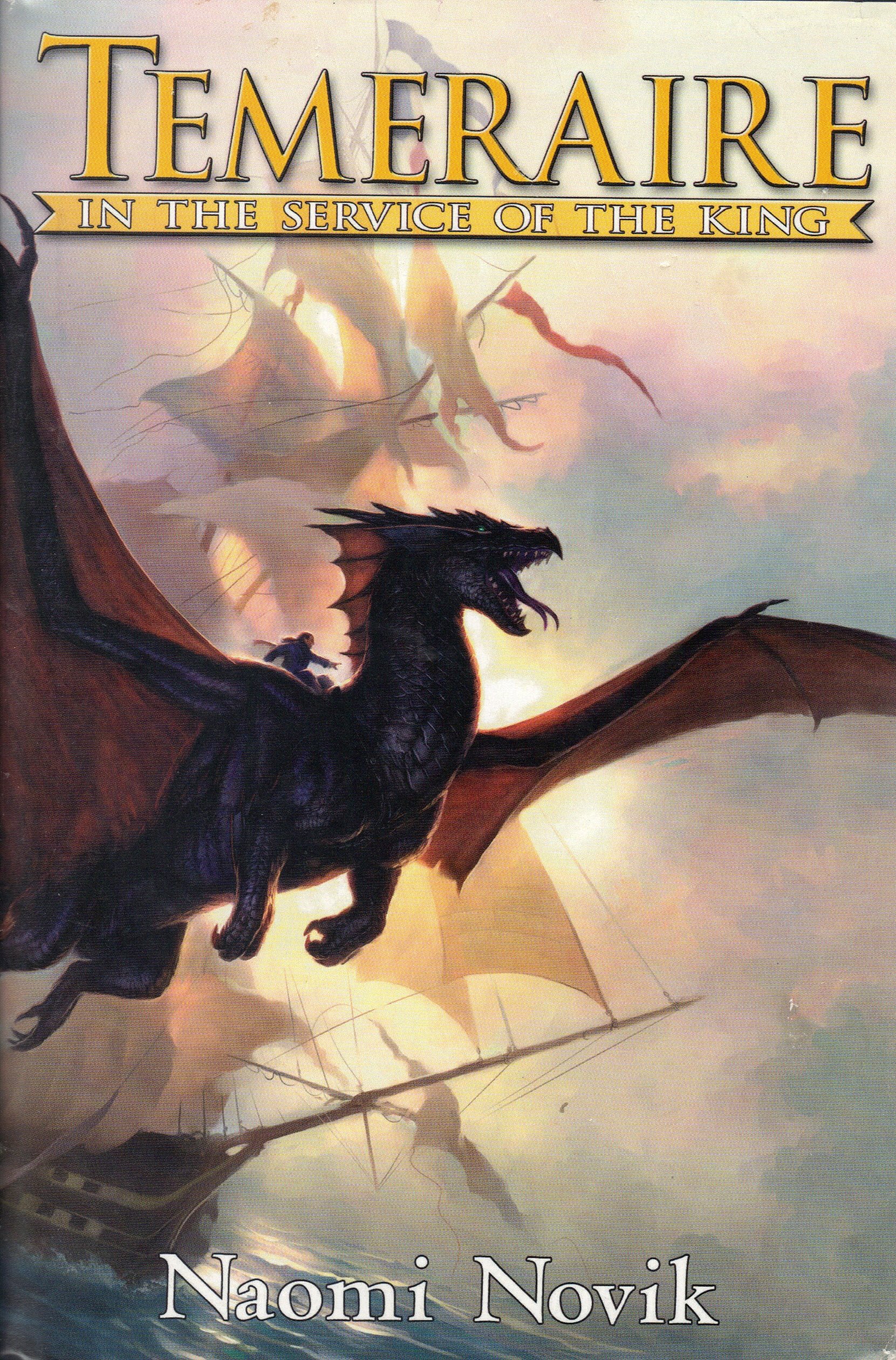
Temeraire (2006)
By Naomi Novik
The nine books in this series take the idea of dragons as weapons of war literally. In an alternate Napoleonic War, sailors ride dragons instead of ships. One dragon can carry a crew of dozens of men. These dragons are intelligent enough to speak, and treated differently by different human societies. In Britain they are functionally animals or warships, almost all utilized by humans, while in China and other countries, they are treated as citizens. The size of these dragons and their presence in a historical time period rather than a completely fantastical world set them apart.
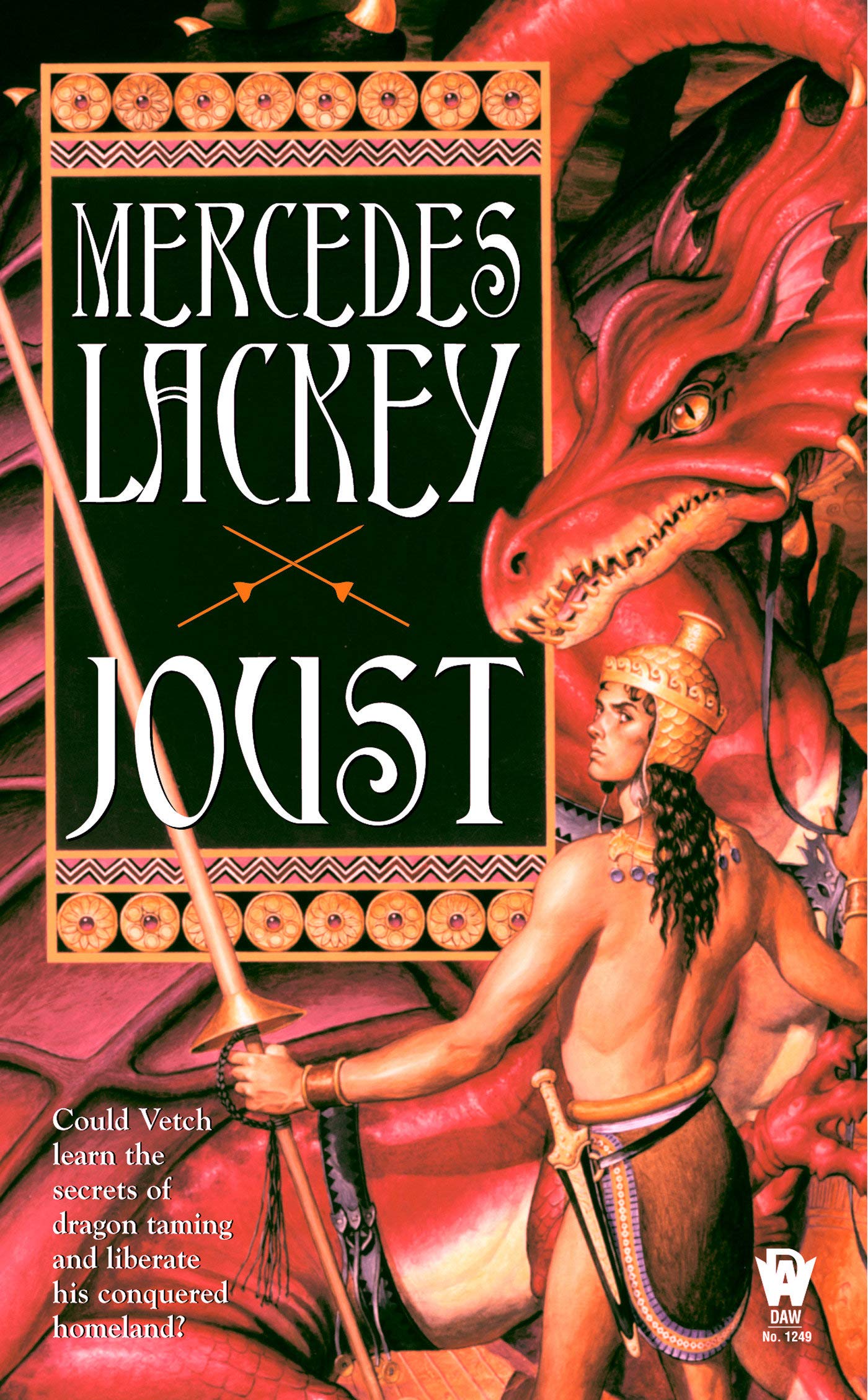
Joust (2003)
By Mercedes Lackey
Mercedes Lackey is a powerhouse of fantasy books of varying quality. Joust is an odd beast: brightly colored dragons that act like real animals are used as war horses in a non-specific, quasi Ancient Egyptian fantasy setting. As a visual concept it’s beautiful (look at that cover!), and the dragons are convincingly ferocious, unpredictable, and half-domesticated. The main problem is that the beginning of this story is slow—a war in the background stays in the background for a while—and the setting depends on your tolerance for “special enslaved teen makes his escape” tropes. But for readers who are just getting a taste for dragon stories, it’s a colorful start.
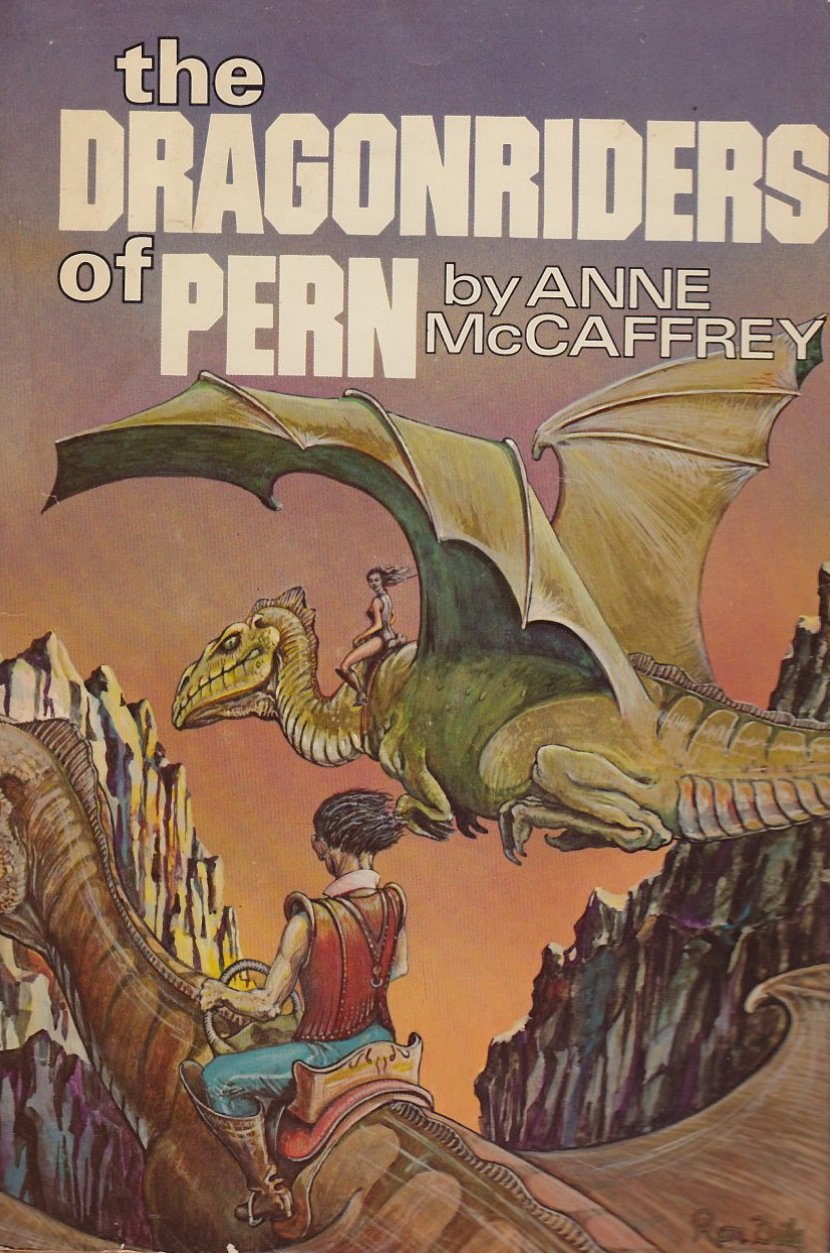
Dragonriders of Pern (1967)
By Anne McCaffrey
This sprawling series featuring “alien” dragons is a staple of science fiction. With dozens of novels in Anne McCaffery’s series and almost a dozen more co-authored by McCaffery and her children, there are plenty of books to choose from.
For me as a teen, they combined the wonder of fantasy dragons with the classification systems and lore of science fiction or Pokemon. These genetically-modified dragons live in specialized fortresses on an alien planet and bond psychically with their human riders.
For all their wonder, the books tend to be over-long and dry, and the human characters never shine as much as the dragons do. But its genre-bending world-building, its confidence in portraying the giant fighting dragons and small, gregarious fire-lizards, and the pure longevity of the series earn it a place on this list.
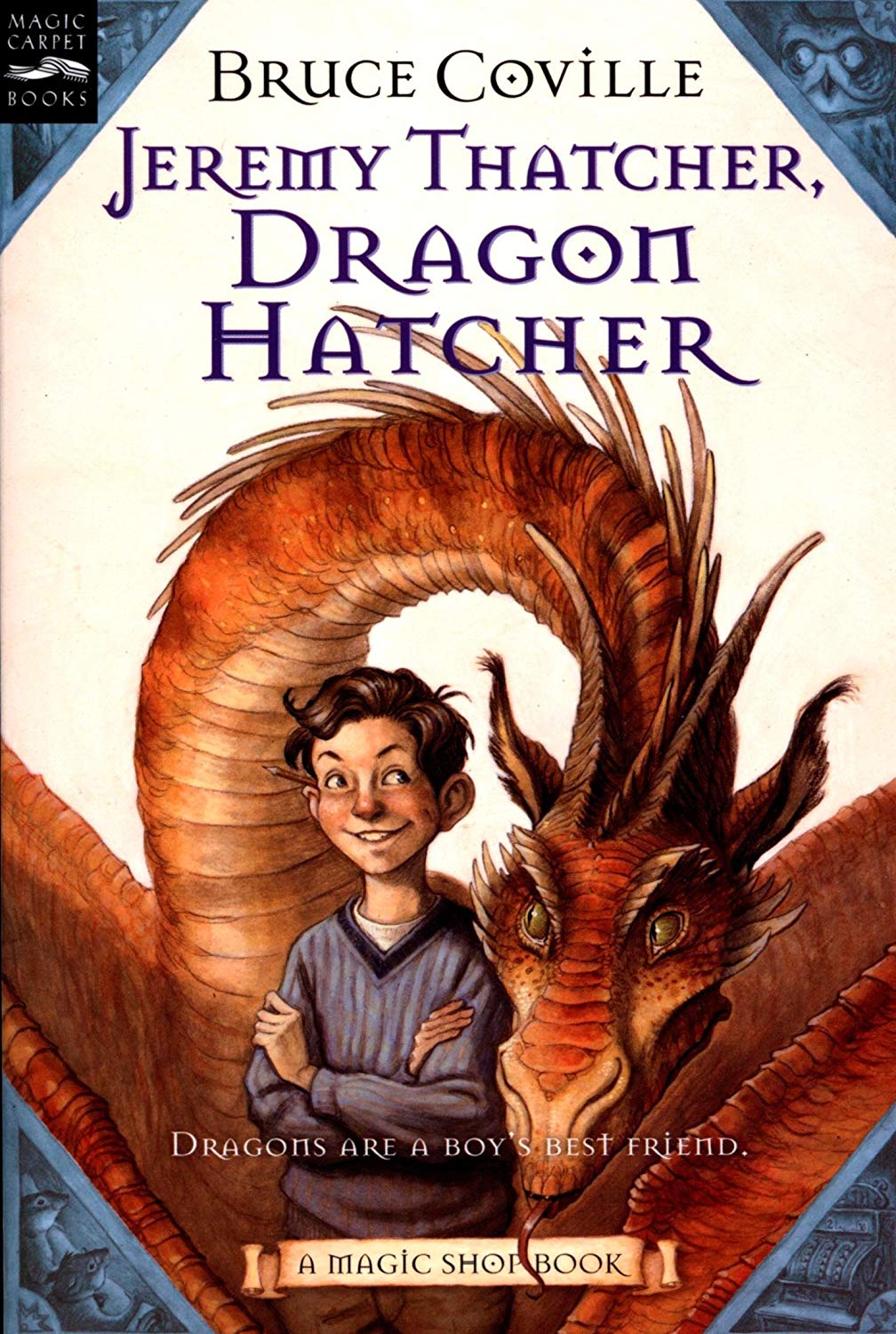
Jeremy Thatcher, Dragon Hatcher (1991)
By Bruce Coville
Part of the “boy and his dragon” genre, this is a particularly charming children’s book. Prolific children’s author Bruce Coville brings humor and a touch of realism to the story of young Jeremy buying a dragon’s egg and raising the hatchling. His father is a veterinarian, so he has some idea about how to treat a dragon as if it’s an animal. While it is probably best for younger children, the book’s portrayal of Jeremy’s perspective and the dragon’s magic makes it a charming story that helped create my love for fantasy adventure stories.
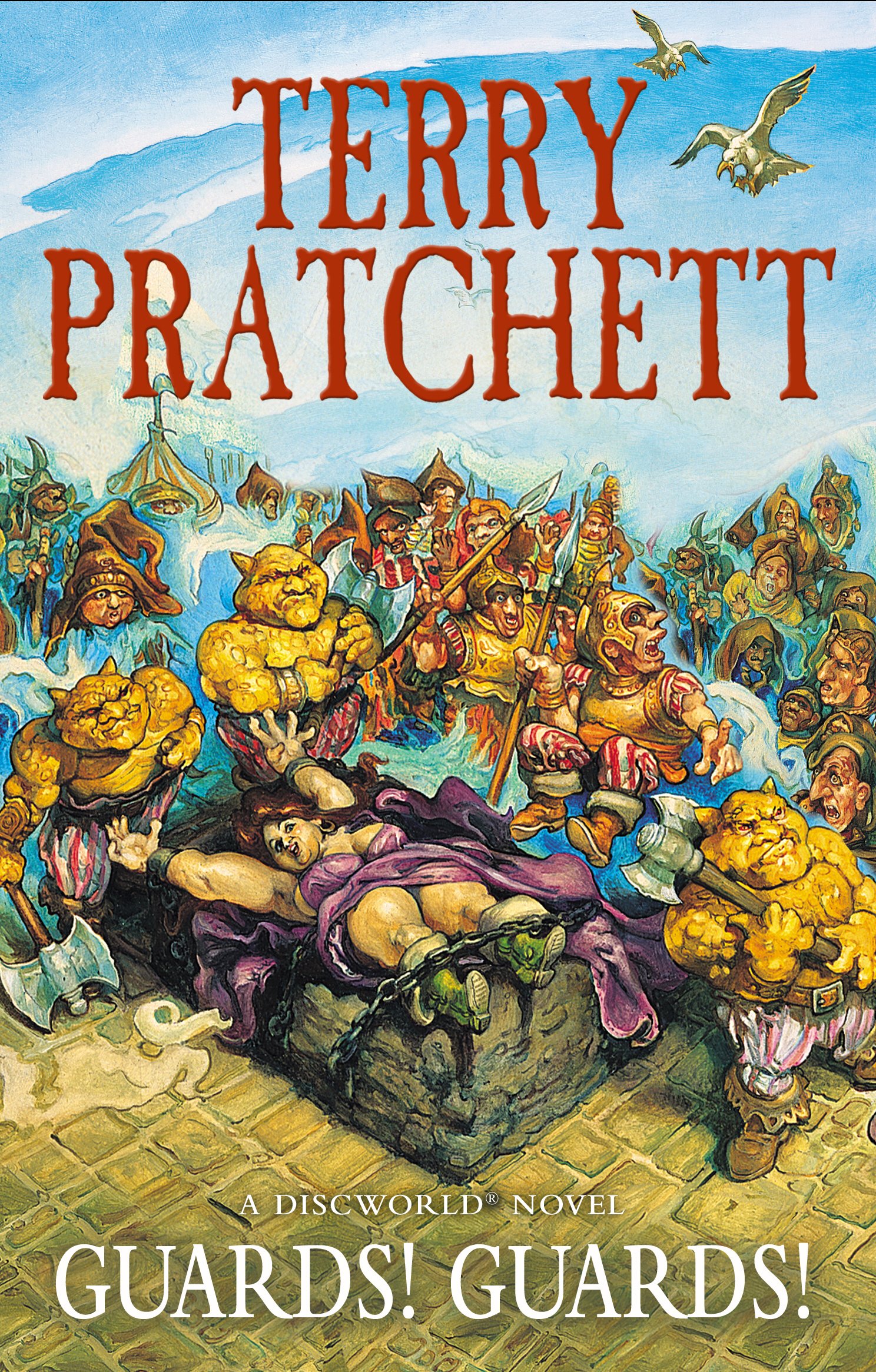
Guards! Guards! (1989)
By Terry Pratchett
Terry Pratchett’s humorous and politically astute fantasy novels are famous for a reason. This is his first “City Watch” story, following Sam Vimes and the rough-around-the-edges police of the fantasy metropolis Ankh-Morpork. The dragon starts as a classic fantasy creature, but its motivations and the presence of the comical little swamp dragons make this a particularly fun read. If you haven’t read the Discworld series, it’s a good place to start. Sam Vimes’ growth throughout the series is one of Pratchett’s many master works… even if not all of the books feature this many dragons.
read more: Everything to Know About BBC America’s Discworld Series
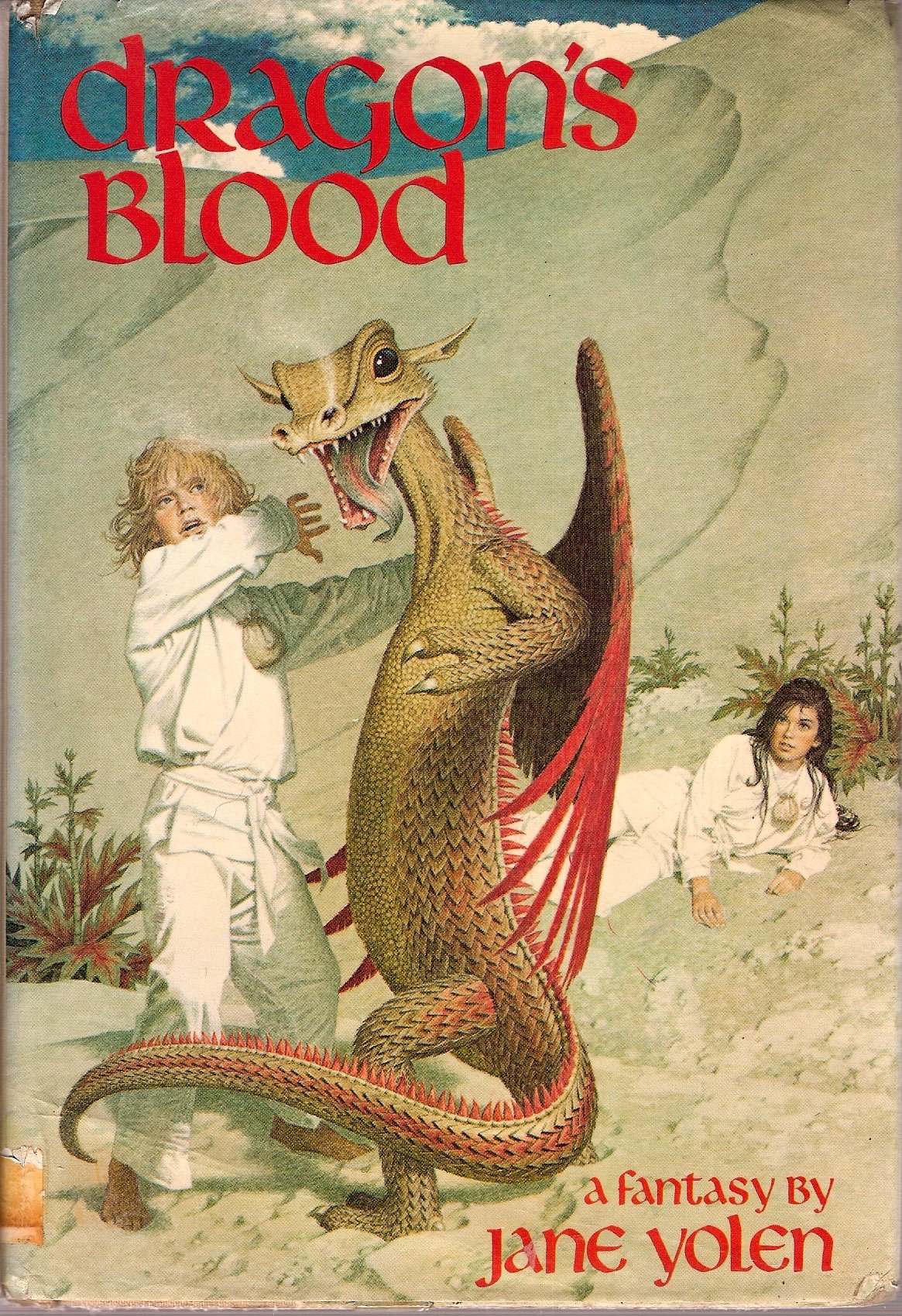
The Pit Dragon trilogy (1982)
By Jane Yolen
Dragons are bred to fight in gambling dens in this story of an alien planet. Yolen’s trilogy is rather obscure, perhaps because it was published before the YA boom with which is shares some similarities.
The main character is Jakken, an enslaved boy on a former prison planet. These dragons are bloody and messy, and taking care of them is a chore. As a kid I was delighted by the details of the planet’s plant life and the horse-like behavior of the dragons. While the plot isn’t unique, the amount of detail Yolen brings to the idea of living with dragons was immersive.
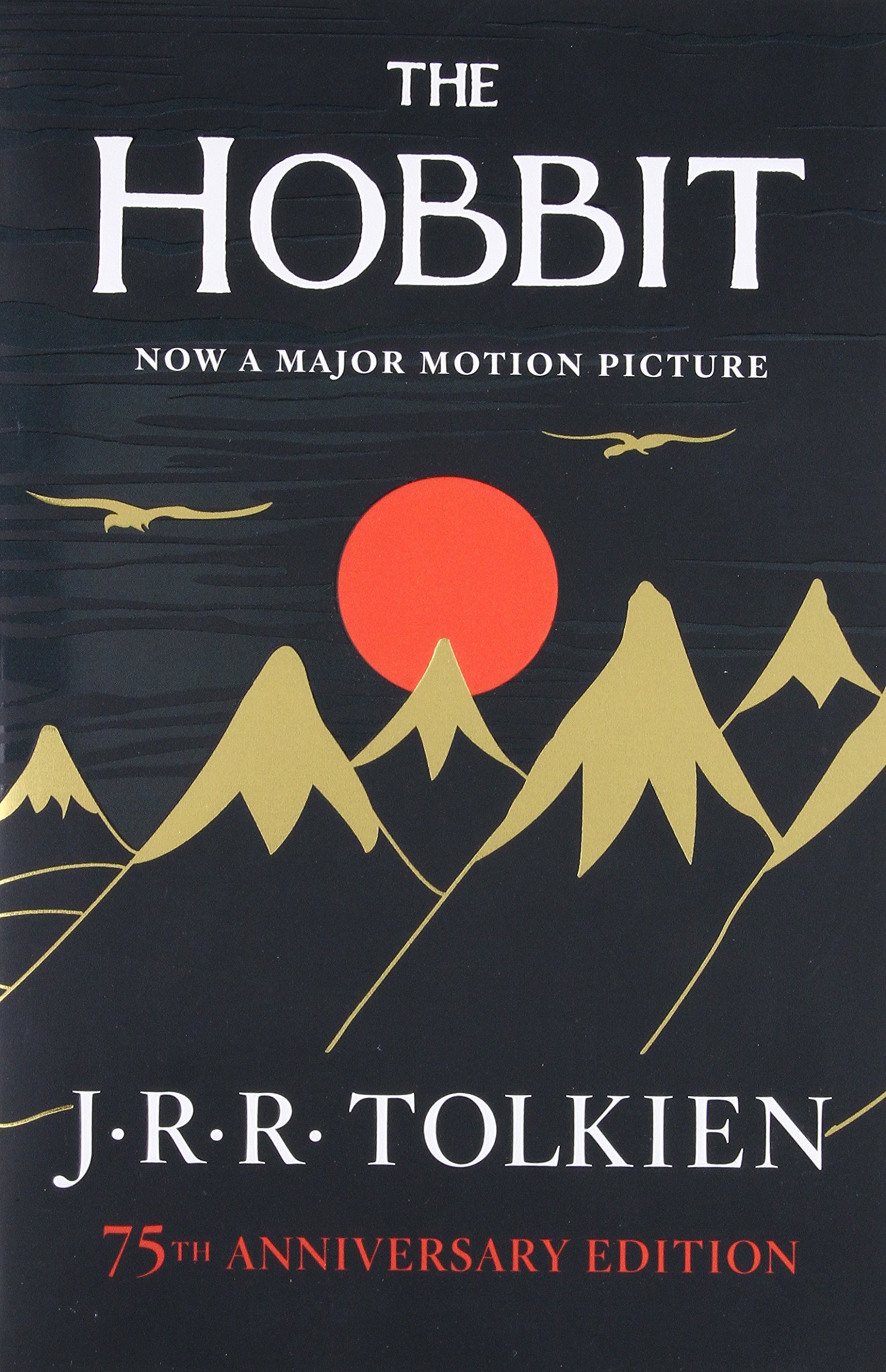
The Hobbit (1937)
By J. R. R. Tolkien
The ur-dragon, Smaug, may seem even more over-hyped than the Game of Thrones brood. Smaug hordes gold and punishes thieves with deadly fire. But I include Tolkein’s dragns on the list partially because Tolkein popularized so much of how dragons are portrayed in fantasy today.
Some of the similarities haven’t carried over to other works, too. In the Silmarrillion and other published world-building material, Tolkein establishes that ice-breathing dragons also existed in Middle-Earth. Both kinds were creations of Morgoth, Middle Earth’s original villain, and hate the other species because they are an evil inverse of their good qualities. This moral underpinning that cannot be seperated from Middle Earth’s lore is one of the many ways in which Tolkiein’s world building shows its author’s Christian worldview.
Megan Crouse writes about Star Wars and pop culture for StarWars.com, Star Wars Insider, and Den of Geek. Read more of her work here. Find her on Twitter @blogfullofwords.
